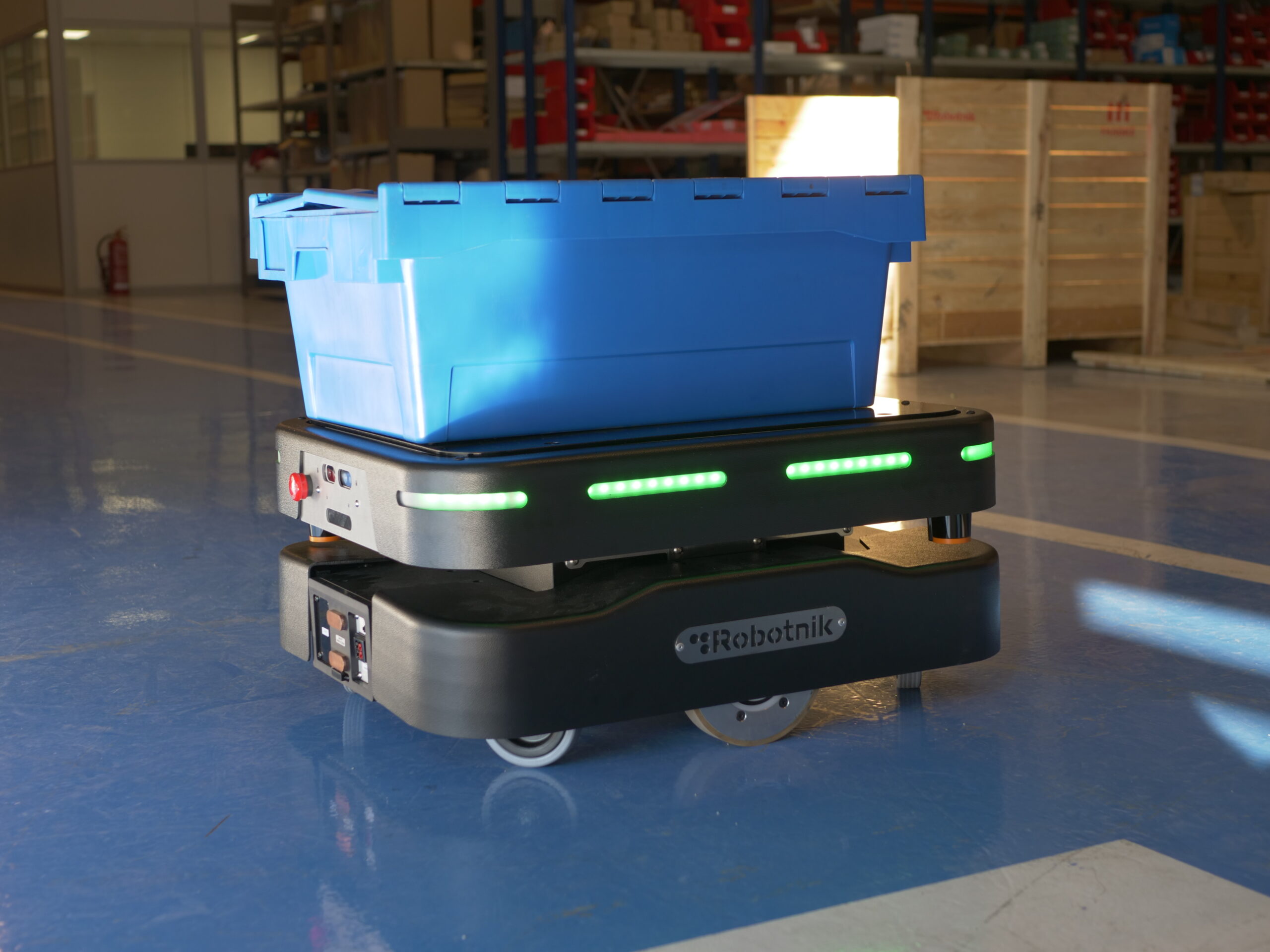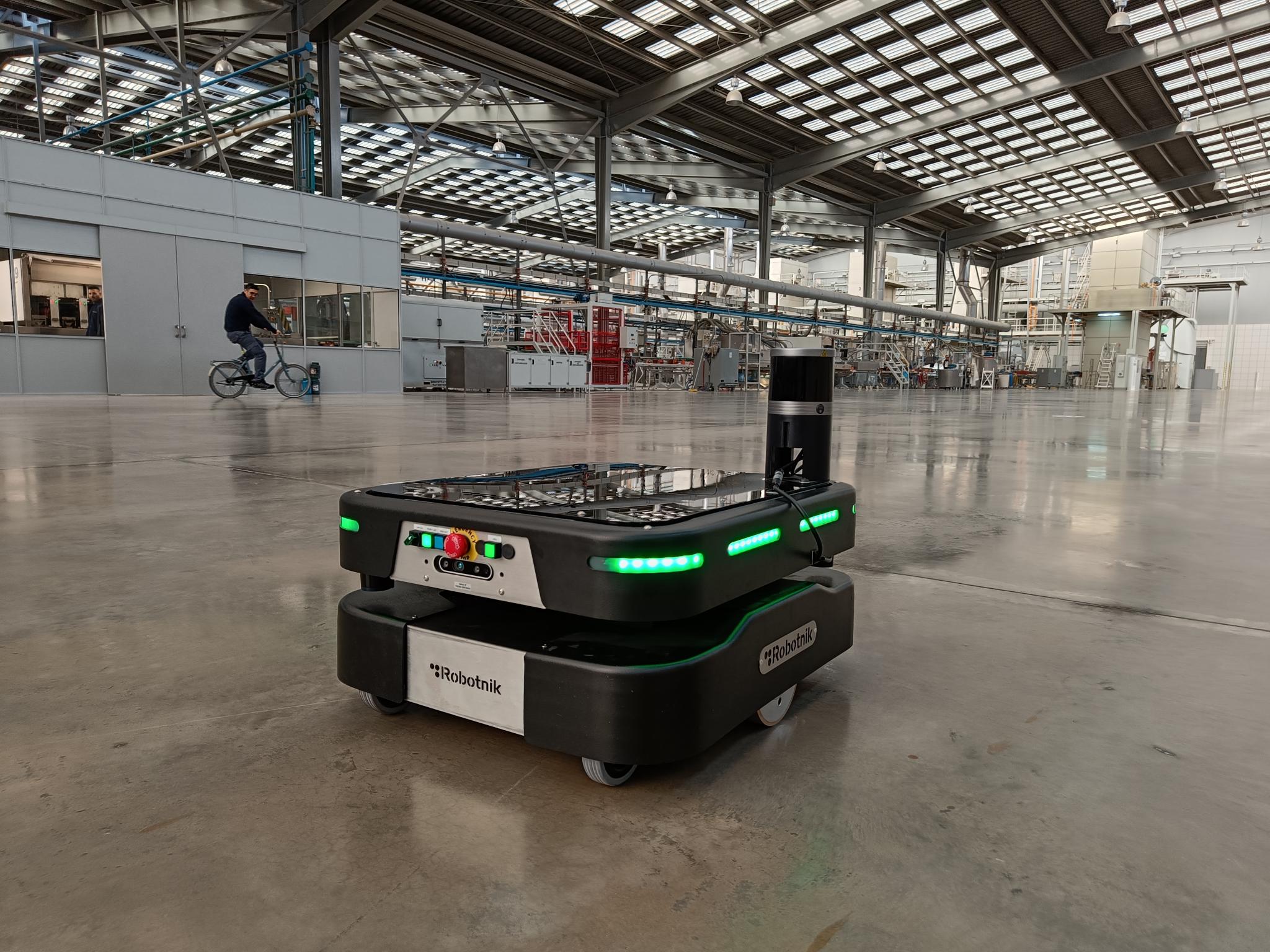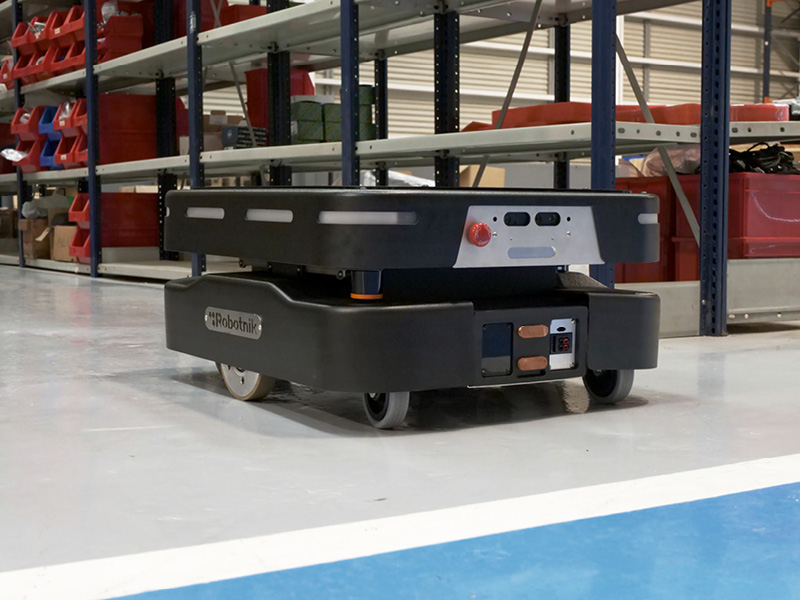What are the different types of mobile robots used in warehouses? This was one of the questions you asked the Robotnik team at Advanced Factories and Hannover Messe, the two trade fairs that took place during the month of April.
This article compiles the 10 most interesting questions asked by visitors to the Robotnik stand at each of these international trade fairs.
Both Advance Factories and Hannover Messe are industrial events, bringing together exhibitors and attendees that shape the landscape of Industry 4.0 and intelligent automation.
The topics of logistics process automation, warehouse automation solutions, transport in warehouses using mobile robotics and, in short, warehouse and factory automation solutions are recurring themes in this context.
10 QUESTIONS ABOUT MOBILE ROBOTICS
-
What is the ROI of implementing collaborative mobile robotics?
Every implementation has particularities that might differ depending on the investment, the application, etc. but the figures show a general return on investment of between 20% and 50%.
-
Which AMR is most in demand for material handling tasks?
Each use case has different needs but right now the RB-THERON and RB-ROBOUT are selling very well for warehouse transport.
-
What are the advantages of an autonomous mobile manipulator compared to a traditional collaborative arm?
Mobility means that it can perform tasks in one or different locations, whereas a traditional robot arm is installed static in a single location.
-
Is the RB-KAIROS+ Pick & Place application collaborative?
Yes, It is. RB-KAIROS+ is a collaborative mobile manipulator with free navigation and safety sensors to share workspace with people.
-
What safety features do your AMRs integrate to share workspace with people?
They have advanced safety sensors, object detection or signalling devices, in addition to complying with the different ISO standards required.
-
What kind of tasks can security and surveillance robots carry out?
Collecting and analysing collected data, detecting people, detecting fires, transmitting blurred faces or activating alarms are some examples of the tasks that these robots can perform in different environments.
-
What kind of companies are interested in surveillance and security robots?
An increasing number of security companies are using security and surveillance robots to integrate them as part of the comprehensive solution they offer to their customers.
-
What kind of tasks can an RB-KAIROS+ perform in a warehouse?
Pick & Place, material or component transport, bolting, sorting, production line supply or material handling, including hazardous or toxic materials, are some examples.
-
For warehouse transport, are AGVs or AMRs more common?
The reality is that in 2021, for the first time, more AMRs were sold than AGVs to perform material handling tasks in warehouses.
-
What is the maximum payload capacity of your mobile robots?
The range of the portfolio is very wide and varies from 50 kg for the RB-BASE to 1000 kg for the RB-ROBOUT.




